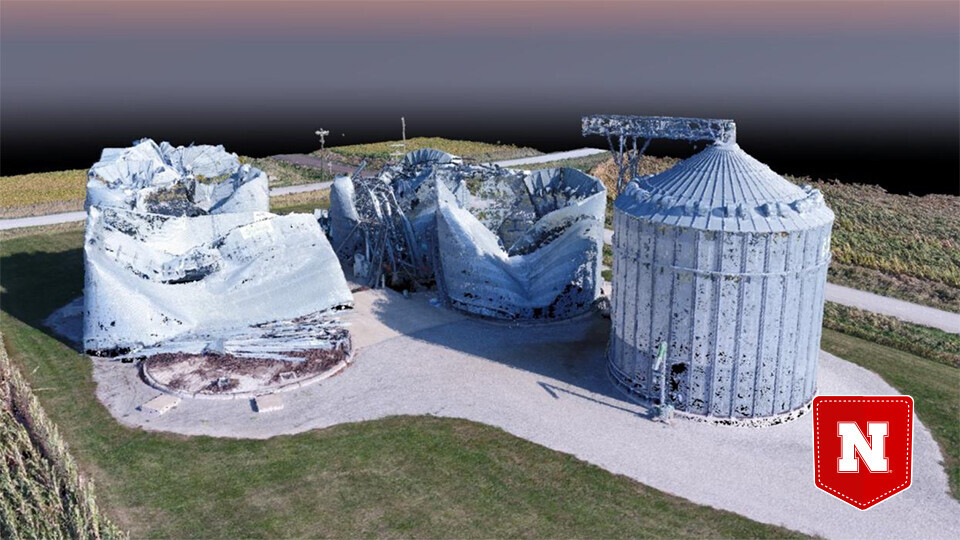
Lincoln, Neb. —Welcome to Pocket Science: a glimpse at recent research from Husker scientists and engineers. For those who want to quickly learn the “What,” “So what” and “Now what” of Husker research.
What?
More than 750,000 steel silos and bins are estimated to pepper rural America, often standing empty before filling up on the annual harvest. The modest cylinders typically feature thin, corrugated walls that belie the importance of storing and drying the grains within.
Some of those silos and bins met their demise on August 10, 2020, when a derecho — a straight-line, long-lived windstorm — sped across a 750-mile-long swath of the Midwest. As it did, the derecho stirred up more than $11 billion in damage and impacted roughly 57 million bushels of stored grain, which is not generally covered by insurance.
Craig Chandler | University Communication and Marketing Christine Wittich holds a grain bin anchor warped by the August 2020 derecho.The derecho struck especially hard along the Interstate 80 corridor of Iowa. While conducting “structural reconnaissance” in the east-central portion of the Hawkeye State, Nebraska U’s Christine Wittich came across a unique case study: an interconnected group of five grain bins, all empty, that were identical in height and diameter. Four of the bins had been destroyed — roofs ripped off, walls buckled, foundations compromised. The other? Totally intact.
So what?
On closer inspection, Wittich and Husker undergrad Benjamin Praeuner discovered that the four demolished structures were labeled as “farm bins,” of the sort usually sold to smaller operations. Though the same in size and purpose, the one surviving structure was instead classified as a “commercial bin,” a type generally marketed toward larger-scale operations.
But their differences went beyond their nomenclature. Wittich and Praeuner’s study indicated that the commercial bin benefited from so-called vertical stiffeners: steel channels, running all the way from the roof to the foundation, that help redistribute loads from the former to the latter and reinforce a wall against buckling. The farm bins lacked those stiffeners and, as the derecho made all too clear, the additional wind resistance they can provide.
Christine Wittich A vertical stiffener on a commercial bin (left), as compared with an anchorage clip found on a typical farm bin (right).Now what?
Though vertical stiffeners are partly intended to curb costs by allowing for thinner walls and extending the lifespans of their bins, the team’s study suggests that the component might also prove the key between withstanding versus succumbing to winds of 100-plus miles per hour.
Christine Wittich / Richard Wood A bird’s-eye photo of the post-derecho site.






